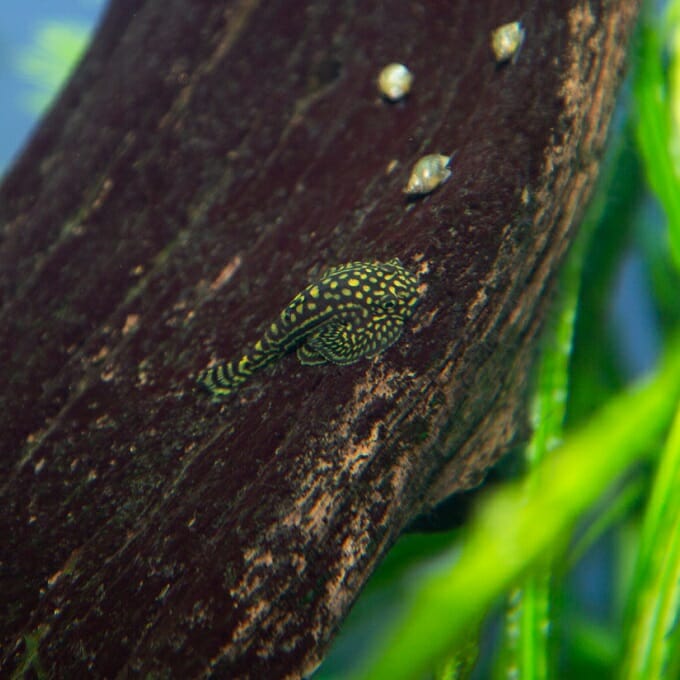-
Size
2.2 inches (6 cm) -
Diet
Aquatic insects, larval insects, crayfish, smaller fishes -
Range
Asia -
Habitat
Rapids and swift-moving streams with good plant cover
Physical Characteristics
- The reticulated hillstream loach is black and yellow, spotted along the head and back. Spots run together along the sides to form long stripes.
- The body is dorsoventrally flattened, and the pectoral and pelvic fins are wide and round.
- This species grows to a maximum length of 2.2 inches (5.7 cm).
Animal Fun Fact
The reticulated hillstream loach's body is dorsoventrally flattened, and the pectoral and pelvic fins are wide and round.
Diet / Feeding
- Feeds on benthic crustaceans and algae.
Range / Habitat
- Occurs in freshwater rivers in China, Vietnam and Cambodia, particularly the Mekong Basin.
- Commonly found in rapids and swift-moving streams with good plant cover. Also found in deep pools and high-gradient rivers.
Reproduction & Growth
- Males develop small spike-like breeding tubercles on the snout and on the pectoral fin rays.
- When a female becomes receptive to a displaying male, she allows him to push her off the rocky bottom into the water column, where the two fish clasp each other’s fins before eggs and sperm are released.
Conservation Status
- “Vulnerable” on the IUCN Red List.
Additional Information
- The reticulated hillstream loach is listed as “Vulnerable” due to a decline of at least 30% between the years of 2000 and 2010.
- The main threats to this loach are runoff from deforestation, habitat destruction due to dam building and overfishing.
- This is a primarily diurnal species, unlike many other species of loaches.







